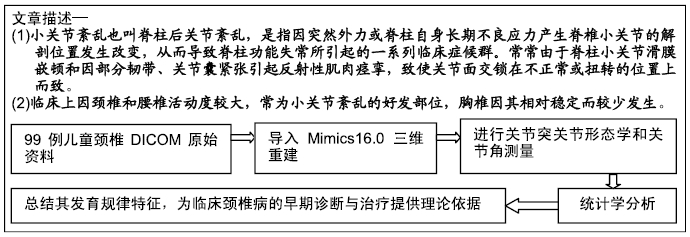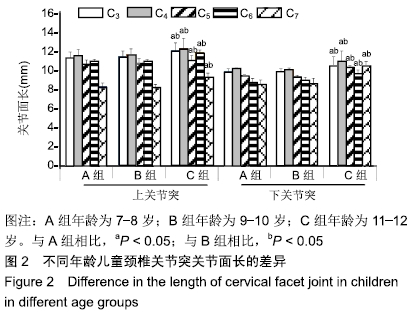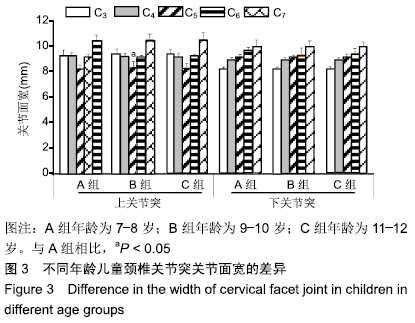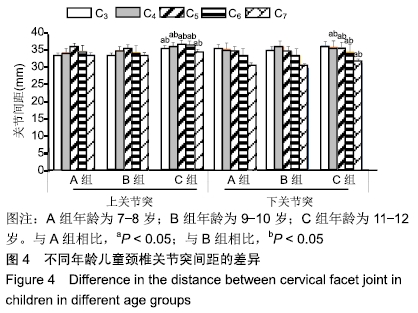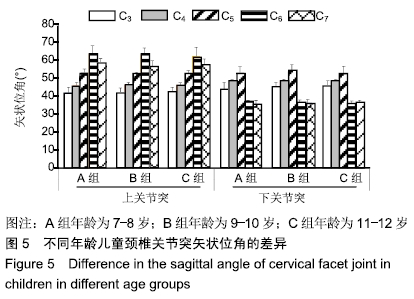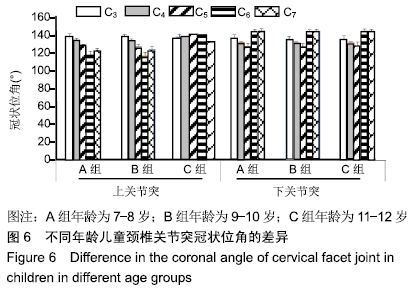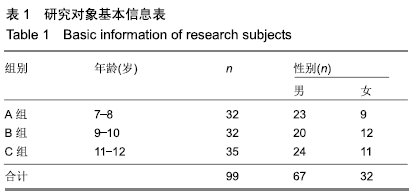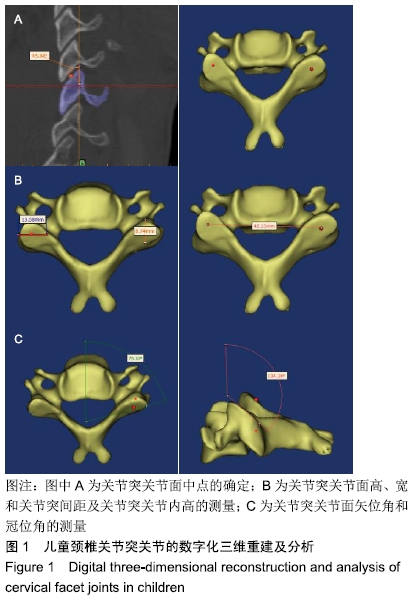[1] BEHROOZ A. AKBARNIA , MUHARREMYAZICI, GEORGE H. Thompson. The Growing Spine[M].New York: Springer-Verlag Berlin and Heidelberg GmbH &Co.K.Ⅶ-Ⅷ.2010.
[2] 袁丽莉,张本忠,窦强.儿童青少年脊柱疾病住院患者病种分析[J].中国学校卫生,2013,34(2):178-180.
[3] MORTAZAVI M, GORE PA, CHANG S, et al. Pediatric cervical spine injuries: a comprehensive review. Childs Nerv Syst. 2011;27(5): 705-717.
[4] KREYKES NS, LETTON RW JR. Current issues in the diagnosis of pediatric cervical spine injury. Semin Pediatr Surg. 2010;19(4):257-264.
[5] CHUNG SB, LEE S, KIM H, et al. Significance of interfacet distance, facet joint orientation, and lumbar lordosis in spondylolysis. Clin Anat. 2012;25(3):391-397.
[6] NGO LM, AIZAWA T, HOSHIKAWA T, et al. Fracture and contralateral dislocation of the twin facet joints of the lower cervical spine. Eur Spine J. 2012;21(2):282-288.
[7] GELLHORN AC, KATZ JN, SURI P. Osteoarthritis of the spine: the facet joints. Nat Rev Rheumatol. 2013;9(4):216-224.
[8] DALCANTO RA, LIEBERMAN I, INCEOGLU S, et al. Biomechanical comparison of transarticular facet screws to lateral mass plates in two-level instrumentations of the cervical spine. Spine (Phila Pa 1976). 2005;30(8):897-892.
[9] 徐荣明,刘观燚,赵红勇,等. 胸椎关节突关节解剖学测量与经关节螺钉固定的关系[J].中国骨与关节损伤杂志, 2010,25(6):481-483.
[10] 李志军,张少杰,李筱贺,等.脊柱关节突关节角变化特点及其临床意义[J].中国运动医学杂志,2006,25(3):348-350.
[11] 郭马超,鲁世保,孔超,等.关节突关节角度和不对称性在退变性腰椎疾病中的角色[J].中国骨与关节杂志,2018,7(10):772-777.
[12] KALICHMAN L, HUNTER DJ. Lumbar facet joint osteoarthritis: a review. Semin Arthritis Rheum. 2007;37(2):69-80.
[13] XU WB, CHEN S, FAN SW, et al. Facet orientation and tropism: Associations with asymmetric lumbar paraspinal and psoas muscle parameters in patients with chronic low back pain. J Back Musculoskelet Rehabil. 2016;29(3):581-586.
[14] DENIS F. The three column spine and its significance in the classification of acute thoracolumbar spinal injuries. Spine (Phila Pa 1976). 1983;8(8):817-831.
[15] CHUNG SB, LEE S, KIM H, et al. Significance of interfacet distance, facet joint orientation, and lumbar lordosis in spondylolysis. Clin Anat. 2012;25(3):391-397.
[16] NGO LM, AIZAWA T, HOSHIKAWA T, et al. Fracture and contralateral dislocation of the twin facet joints of the lower cervical spine. Eur Spine J. 2012;21(2):282-288.
[17] GELLHORN AC, KATZ JN, SURI P. Osteoarthritis of the spine: the facet joints. Nat Rev Rheumatol. 2013;9(4):216-224.
[18] JAUMARD NV, WELCH WC, WINKELSTEIN BA. Spinal facet joint biomechanics and mechanotransduction in normal, injury and degenerative conditions. J Biomech Eng. 2011;133(7):071010.
[19] EBRAHEIM NA, PATIL V, LIU J, et al. Morphometric analyses of the cervical superior facets and implications for facet dislocation. Int Orthop. 2008;32(1):97-101.
[20] 曾辉.下颈椎关节突关节的影像学观测及临床意义[D].合肥:安徽医科大学,2012.
[21] 王非,瞿东滨,金大地,等.实验性腰椎失稳致椎间盘退变的放射影像学观察[J].中国矫形外科杂志,2003,11(2):113-115.
[22] DENIS F. The three column spine and its significance in the classification of acute thoracolumbar spinal injuries. Spine (Phila Pa 1976). 1983;8(8):817-831.
[23] YOGANANDAN N, KNOWLES SA, MAIMAN DJ, et al. Anatomic study of the morphology of human cervical facet joint. Spine (Phila Pa 1976). 2003;28(20):2317-2323.
|
